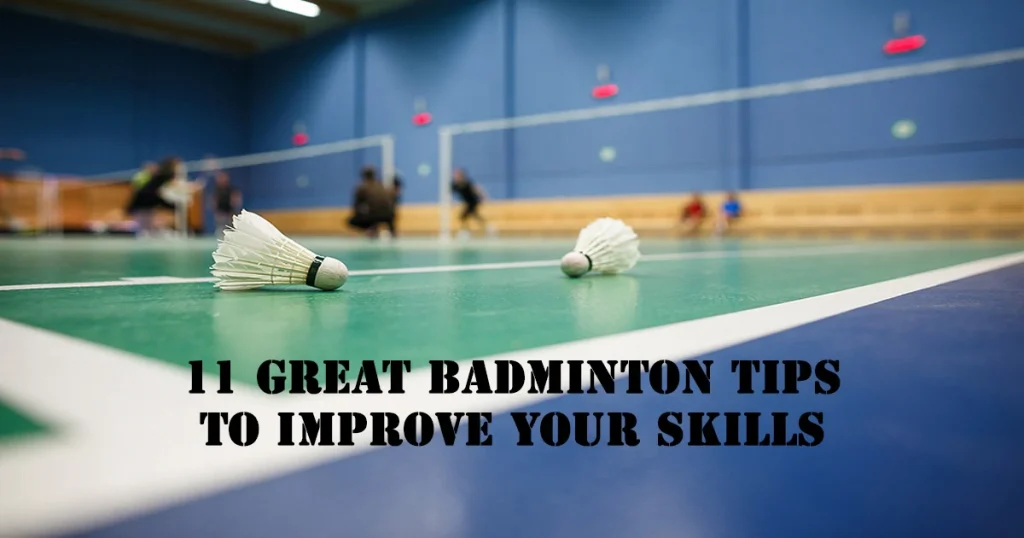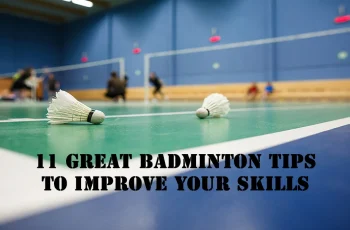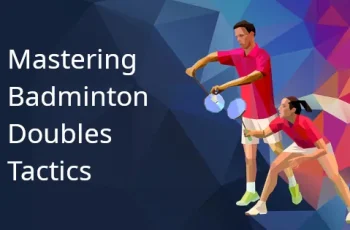Last updated on May 22nd, 2024
Badminton is a fast-paced and highly popular sport that demands agility, precision and strategic thinking. Whether you’re a beginner eager to learn the game or a seasoned player looking to brush up on the rules, understanding the fundamentals is essential for enjoyable and fair gameplay.
In this article, we’ll delve into the rules of badminton, providing you with a comprehensive guide that will help you become a master of the game.
There really are a lot of badminton rules to get your head around if you are just starting out. The aim here is to simplify them enough so the player(s) can start to play badminton in minutes .
That means presenting only the most essential aspects of the rules and regulations.
If you decide to take your game to the next level and play in local leagues you will no doubt want to join a club.
From there you will soon pick up the rest of the rather wordy badminton rules and regulations that cover every eventuality. However you really don’t need to know much of this when just starting out.
Two of the most commonly ask questions are: How do you play badminton? and What are the rules of badminton?
Let’s answer those exact questions right now.
Table of Contents
How To Play Badminton – Basic Rules
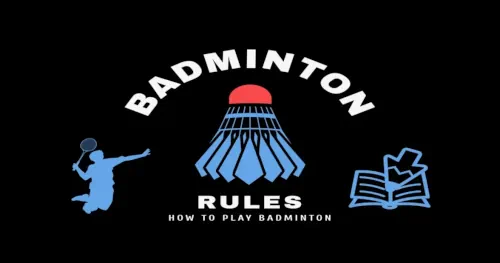
How do you play badminton? There are five forms of the sport:
- Men’s Singles
- Women’s Singles
- Men’s Doubles
- Women’s Doubles
- Mixed Doubles (Men & Women)
A singles match consists of two player’s one person on each side of the court. A doubles match consists of four players with two people per side of the badminton court.
What Is The Correct Height Of The Badminton Net
The height of the net needs to be 1.524 metres (5ft) at the centre of the court and 1.55 metres (5ft 1 inch) over the side lines for doubles (outside edges).
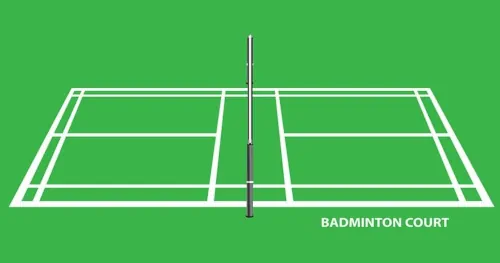
Badminton Scoring System
- Matches consist of the best of three games.
- A game is won when a side reaches 21 points.
- One point is awarded to the side winning a rally.
- Should the score become tied at 20-all, the side which gains a two point lead first, shall win that game.
- If the score become tied at 29-all, the side scoring the next point (30th point) wins that game.
- The side winning a game serves first in the next game.
When A Player Should Change Ends
- Players change ends at the end of the first game.
- A change also occurs at the end of the second game should there be a third game.
- A further change is also required within the third game upon the first side acquiring 11 points.
Badminton Service Rules
- The server and the receiver stand diagonally in opposite service courts. They should avoid touching the boundary lines of the service courts.
- Part of the feet of the server & receiver should remain in direct contact with the court in a stationary position until the service is started.
- The flight of the shuttle needs to move upwards from the server’s racket in order to pass over the net so it will arrive in the receiver’s service court.
- In doubles partners can take up any positions within their respective courts, providing they do not unsight the opposing server / receiver.
Service Rules For Singles
Badminton Rules for Singles – Serving & Receiving
- Players will serve from & receive in their respective right service courts when the server has not scored or has scored an even number of points in that game.
- The players will serve from & receive in, their respective left service courts when the server has scored an odd number of points in that game.
Service Rules For Doubles
Badminton Rules for Doubles – Serving & Receiving
- Players of the serving side serve from the right service court when the serving side has not scored or has scored an even number of points in that game.
- A player of the serving side serves from the left service court when the serving side has scored an odd number of points in that game.
- The player of the receiving side who served last will stay in the same service court from where they last served.
- The reverse pattern must apply to the receiver’s partner.
- Players don’t change their respective service courts until they win a point when their side is serving.
- The sequence of serving passes consecutively from the initial server who started the game from the right service court to the partner of the initial receiver.
- Either player of the winning side can serve first in the next game & either player of the losing side can receive first in the next game.
Badminton Rules On Service Faults
Faults include things such as the shuttle failing to pass over the net or it hitting the ceiling. The most common is the shuttle landing outside the boundaries of the court.
FAQ’s – Other Badminton Rules
When the shuttlecock lands on the line is it considered in?
Yes – If the head of the shuttlecock touches the line it is considered to be inside the court.
Is double touch allowed in badminton?
No – Badminton rules say after you have touch the shuttle once the next touch or contact must come from your opponent.
Conclusion: Simplified Badminton Rules

Mastering the rules of badminton is crucial for enjoying competitive and fair gameplay. From understanding the dimensions of the court to familiarizing yourself with the scoring system, serving, faults and doubles play, a solid grasp of the game’s rules will elevate your badminton skills.
So, whether you’re a beginner or a seasoned player, commit these rules to memory, get on the court and immerse yourself in the exhilarating world of badminton. Remember, practice and persistence are the keys to becoming a skilled player in this thrilling sport.
Hopefully this simplified look at the basic rules will have you playing badminton in no time. I’ve covered all the main aspects of the sport that should make both playing and watching easier to understand.
If you’re playing at school or at a club then you will be given lots of instruction into how the rules of the sport are applied.
So now you know how to play badminton and we have answered the most important question: What are the rules of badminton?
The most important thing is to enjoy playing and you will soon pick up the rest of the rules.
The BBC have a good badminton factfile that is also worth a look.
For those of you wanting to see the full badminton rules & regulations you can head over to the BWF.
